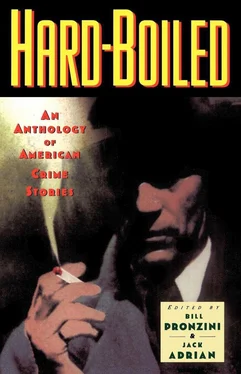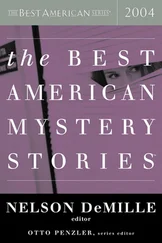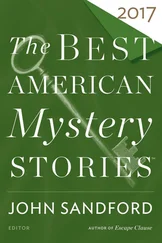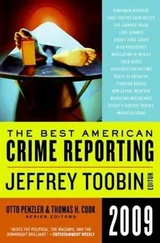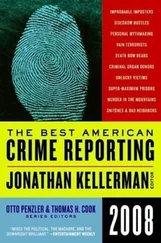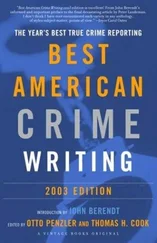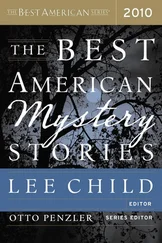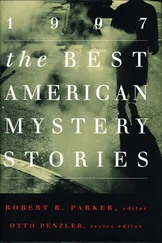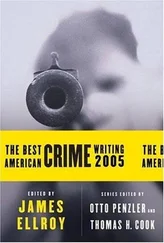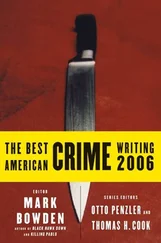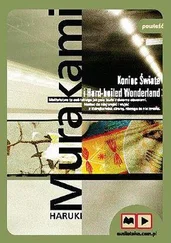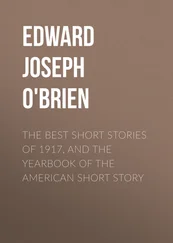After Banbrock and his attorney had gone away together, I went back to the detectives’ assembly room to chew over the job with Pat Reddy, the police sleuth assigned to it.
Pat was the youngest member of the detective bureau — a big blond Irishman who went in for the spectacular in his lazy way.
A couple of years ago he was a new copper, pounding his feet in harness on a hillside beat. One night he tagged an automobile that was parked in front of a fireplug. The owner came out just then and gave him an argument. She was Althea Wallach, only and spoiled daughter of the owner of the Wallach Coffee Company — a slim, reckless youngster with hot eyes. She must have told Pat plenty. He took her over to the station and dumped her in a cell.
Old Wallach, so the story goes, showed up the next morning with a full head of steam and half the lawyers in San Francisco. But Pat made his charge stick, and the girl was fined. Old Wallach did everything but take a punch at Pat in the corridor afterward. Pat grinned his sleepy grin at the coffee importer, and drawled, “You better lay off me — or I’ll stop drinking your coffee.”
That crack got into most of the newspapers in the country, and even into a Broadway show.
But Pat didn’t stop with the snappy comeback. Three days later he and Althea Wallach went over to Alameda and got themselves married. I was in on that part. I happened to be on the ferry they took, and they dragged me along to see the deed done.
Old Wallach immediately disowned his daughter, but that didn’t seem to worry anybody else. Pat went on pounding his beat, but, now that he was conspicuous, it wasn’t long before his qualities were noticed. He was boosted into the detective bureau.
Old Wallach relented before he died, and left Althea his millions.
Pat took the afternoon off to go to the funeral, and went back to work that night, catching a wagonload of gunmen. He kept on working. I don’t know what his wife did with her money, but Pat didn’t even improve the quality of his cigars — though he should have. He lived now in the Wallach mansion, true enough, and now and then on rainy mornings he would be driven down to the Hall in a Hispano-Suiza brougham; but there was no difference in him beyond that.
That was the big blond Irishman who sat across a desk from me in the assembly room and fumigated me with something shaped like a cigar.
He took the cigar-like thing out of his mouth presently, and spoke through the fumes. “This Correll woman you think’s tied up with the Banbrocks — she was stuck-up a couple of months back and nicked for eight hundred dollars. Know that?”
I hadn’t known it. “Lose anything besides cash?” I asked.
“No.”
“You believe it?”
He grinned. “That’s the point,” he said. “We didn’t catch the bird who did it. With women who lose things that way — especially money — it’s always a question whether it’s a hold-up or a hold-out.”
He teased some more poison-gas out of the cigar-thing, and added, “The hold-up might have been on the level, though. What are you figuring on doing now?”
“Let’s go up to the Agency and see if anything new has turned up. Then I’d like to talk to Mrs. Banbrock again. Maybe she can tell us something about the Correll woman.”
At the office I found that reports had come in on the rest of the out-of-town names and addresses. Apparently none of these people knew anything about the girls’ whereabouts. Reddy and I went on up to Sea Cliff to the Banbrock home.
Banbrock had telephoned the news of Mrs. Correll’s death to his wife, and she had read the papers. She told us she could think of no reason for the suicide. She could imagine no possible connection between the suicide and her stepdaughters’ vanishing.
“Mrs. Correll seemed as nearly contented and happy as usual the last time I saw her, two or three weeks ago,” Mrs. Banbrock said. “Of course she was by nature inclined to be dissatisfied with things, but not to the extent of doing a thing like this.”
“Do you know of any trouble between her and her husband?”
“No. So far as I know, they were happy, though—”
She broke off. Hesitancy, embarrassment showed in her dark eyes.
“Though?” I repeated.
“If I don’t tell you now, you’ll think I am hiding something,” she said, flushing, and laughing a little laugh that held more nervousness than amusement. “It hasn’t any bearing, but I was always just a little jealous of Irma. She and my husband were — well, everyone thought they would marry. That was a little before he and I married. I never let it show, and I dare say it was a foolish idea, but I always had a suspicion that Irma married Stewart more in pique than for any other reason, and that she was still fond of Alfred — Mr. Banbrock.”
“Was there anything definite to make you think that?”
“No, nothing — really! I never thoroughly believed it. It was just a sort of vague feeling. Cattiness, no doubt, more than anything else.”
It was getting along toward evening when Pat and I left the Banbrock house. Before we knocked off for the day, I called up the Old Man — the Continental’s San Francisco branch manager, and therefore my boss — and asked him to sic an operative on Irma Correll’s past.
I took a look at the morning papers — thanks to their custom of appearing almost as soon as the sun is out of sight — before I went to bed. They had given our job a good spread. All the facts except those having to do with the Correll angle were there, plus photographs, and the usual assortment of guesses and similar garbage.
The following morning I went after the friends of the missing girls to whom I had not yet talked. I found some of them and got nothing of value from them. Late in the morning I telephoned the office to see if anything new had turned up. It had.
“We’ve just had a call from the sheriff’s office at Martinez,” the Old Man told me. “An Italian grapegrower near Knob Valley picked up a charred photograph a couple of days ago, and recognized it as Ruth Banbrock when he saw her picture in this morning’s paper. Will you get up there? A deputy sheriff and the Italian are waiting for you in the Knob Valley marshal’s office.”
“I’m on my way,” I said.
At the ferry building I used the four minutes before my boat left trying to get Pat Reddy on the phone, with no success.
Knob Valley is a town of less than a thousand people, a dreary, dirty town in Contra Costa County. A San Francisco-Sacramento local set me down there while the afternoon was still young.
I knew the marshal slightly — Tom Orth. I found two men in the office with him. Orth introduced us. Abner Paget, a gawky man of forty-something, with a slack chin, scrawny face, and pale intelligent eyes, was the deputy sheriff. Gio Cereghino, the Italian grapegrower, was a small, nut-brown man with strong yellow teeth that showed in an everlasting smile under his black mustache, and soft brown eyes.
Paget showed me the photograph. A scorched piece of paper the size of a half-dollar, apparently all that had not been burned of the original picture. It was Ruth Banbrock’s face. There was little room for doubting that. She had a peculiarly excited — almost drunken — look, and her eyes were larger than in the other pictures of her I had seen. But it was her face.
“He says he found it day ’fore yesterday,” Paget explained dryly, nodding at the Italian. “The wind blew it against his foot when he was walkin’ up a piece of road near his place. He picked it up an’ stuck it in his pocket, he says, for no special reason, I guess.” He paused to regard the Italian meditatively. The Italian nodded his head in vigorous affirmation.
“Anyways,” the deputy sheriff went on, “he was in town this mornin’, an’ seen the pictures in the papers from Frisco. So he come in here an’ told Tom about it. Tom an’ me decided the best thing was to phone your agency — since the papers said you was workin’ on it.”
Читать дальше
